These were the 3 books I used quite a bit during my doll making journey:

The Complete Book of Dollmaking by Pamela Peake. It’s a really simple introduction I picked up years ago at Half Price Books in Berkeley. It’s a great book for beginners who just want to make a cloth doll to get their feet wet while perusing other doll styles.
It gives a basic overview of different kinds of dolls, but if you want to really make something complicated, I’d pick up books specializing in just that particular kind of doll making.
This basic cloth doll has a separate head and a simple body.
My initial dolls used this basic idea- separate head & center seamed legs. It was a good learning experience.
This doll has a shaped bust that I tried out, but ended up rejecting. I did like this head shape more though & it introduced me to the idea of placing a stick to strengthen the neck. The pattern itself is missing a leg piece, but it would be easy enough to draft. 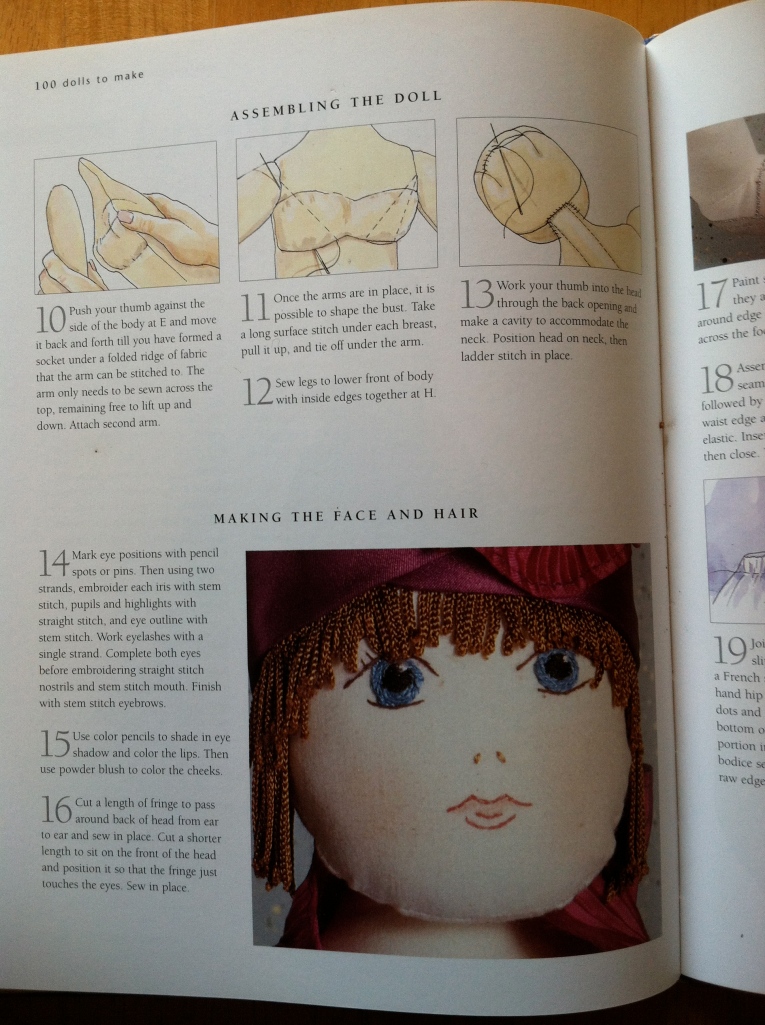
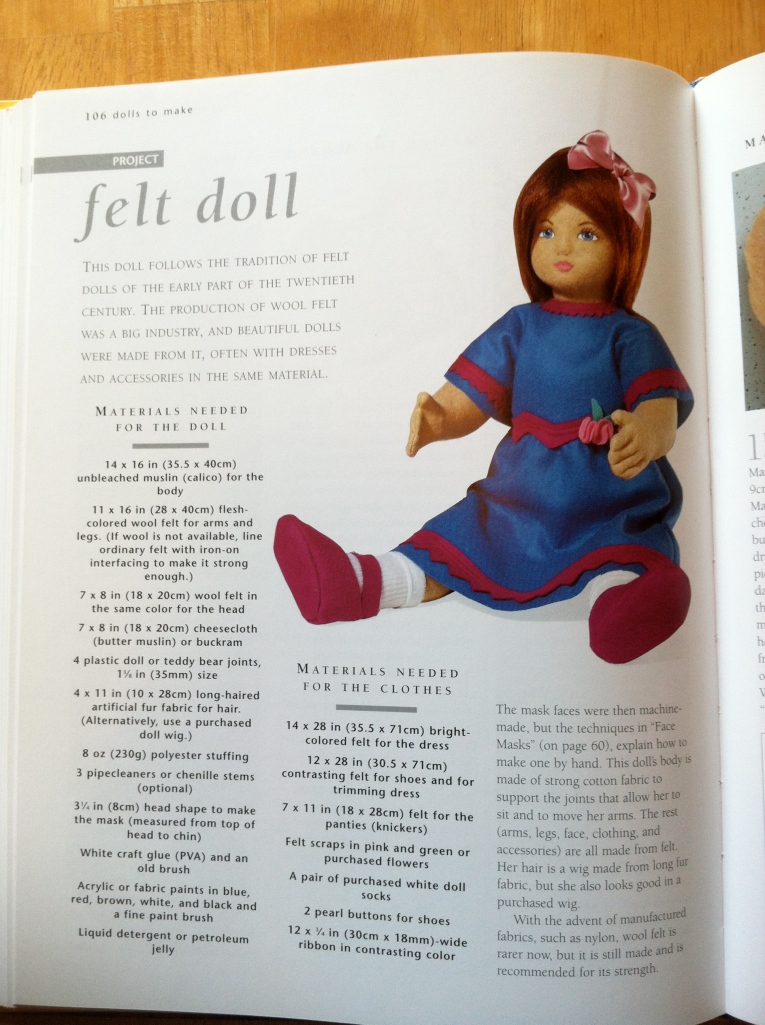
This felt doll is very cool. With a little tweaking you could get a really beautiful looking doll reminiscent of Dare Wright’s, Edith from the “Lonely Doll” series of books. In the future, I’d like to experiment with making my own felt masks. I haven’t yet though so I can’t say if this system works.
The book comes with patterns you can photocopy & enlarge.
Storybook Toys by Jill Hamor is awesome. Half of it is dolls & the other half is stuffed animals. It’s for an intermediate/advanced audience. Beginners beware.
Most of the dolls have “baseball heads.” See the seaming? Like a baseball. They were super popular in the 50s & 60s. Understandably, Jill doesn’t want you to use her patterns to make dolls to sell, but you can find similar vintage patterns online that are in the public domain & use them. I toyed with using the baseball head as the basis for my lady dolls, but the style is much better suited to children’s dolls, especially if you’re crafty and want to make a kid an American Girl’s style doll without the hefty price tag.
She makes the most beautiful yarn hair I’ve ever seen. It’s labor intensive, but turns out beautifully.
One of the first dolls in the book is a flat pancake doll to get you started. She’s really cute.
Some of the patterns are both in the book pages- to be traced or photocopied-
While others are on a pull out sheet in the back.
More Felt Friends from Japan by Naomi Tabatha. Nearly all of the items are felt animals, but there are a couple of awesome dolls.
Some of the patterns are inside the book, waiting to be traced, while others are inside the dust jacket, also needing to be traced.
Miss Kitty & her amazing wardrobe made me buy the book. Everything is made of felt, so hemming is pretty much nonexistent. It’s a great place to get the feel for constructing tiny doll clothes.
I LOVE Japanese pose dolls, so this was a big selling point. The dolls are anchored to their bases. There are simple instructions for wiring them that is way, way easier than what I’ve seen in other books. I wired a few of my prototypes, but the extra time and expense wasn’t worth it. Maybe if I ever convert one of my bookcases into a doll house then I might make posable dolls.
There were a lot of other books I found at the library. But they mostly focused on making cloth art dolls that didn’t appeal to me.
That’s about it. I’ve been working on Posy Rabbit’s tiny wardrobe. I love sewing tiny clothes!
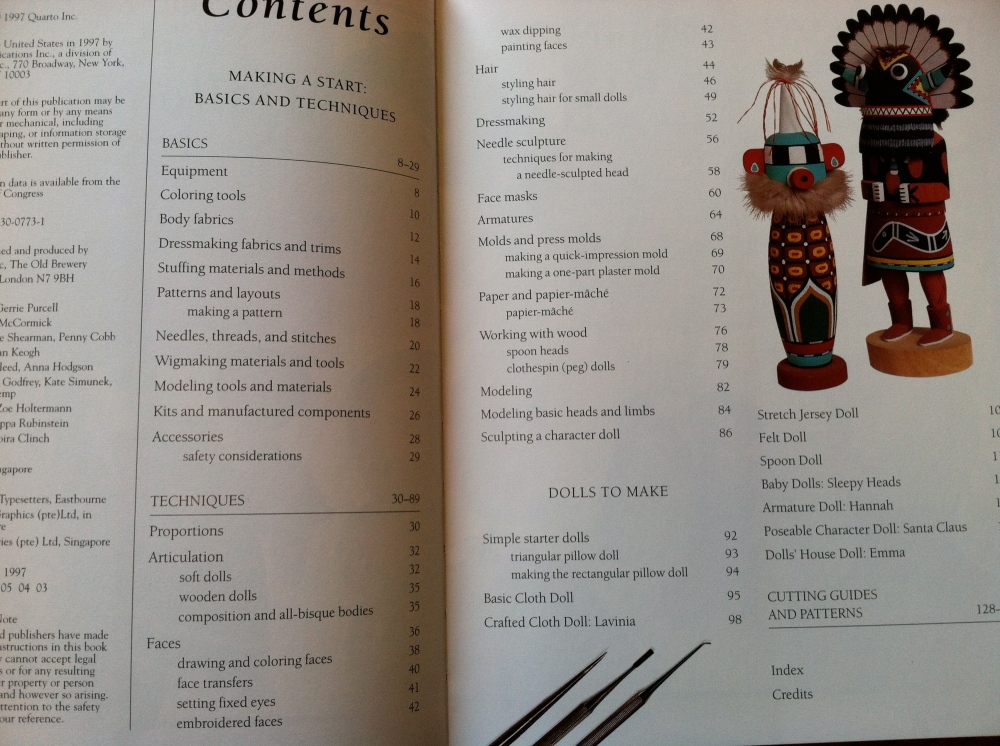



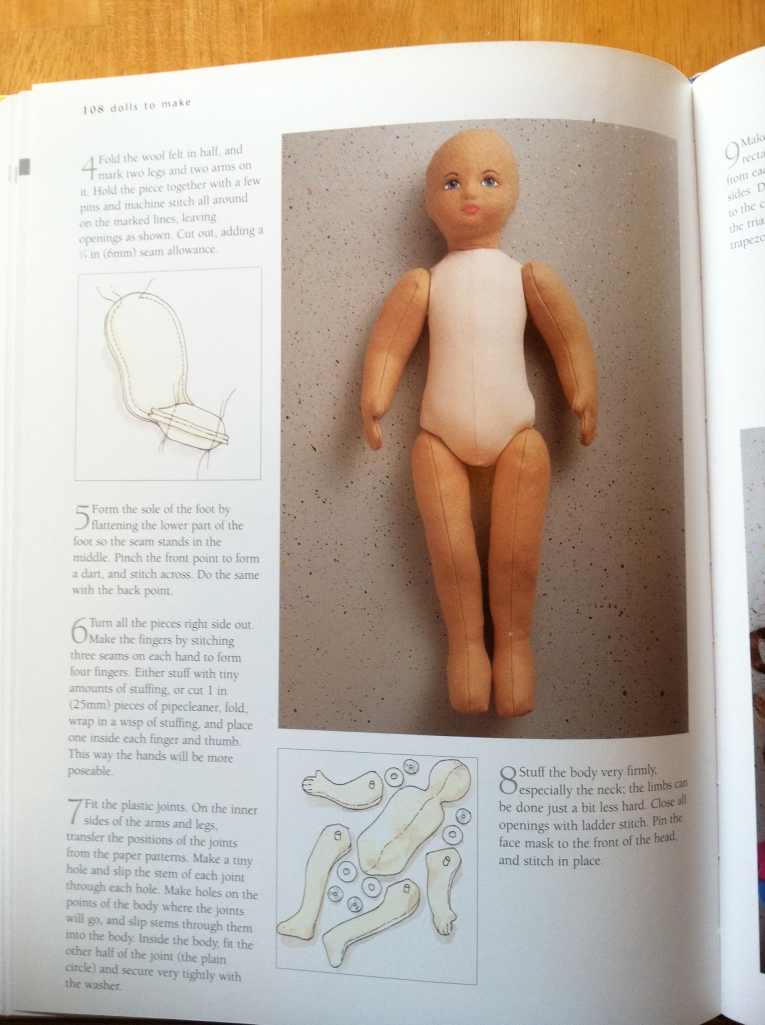

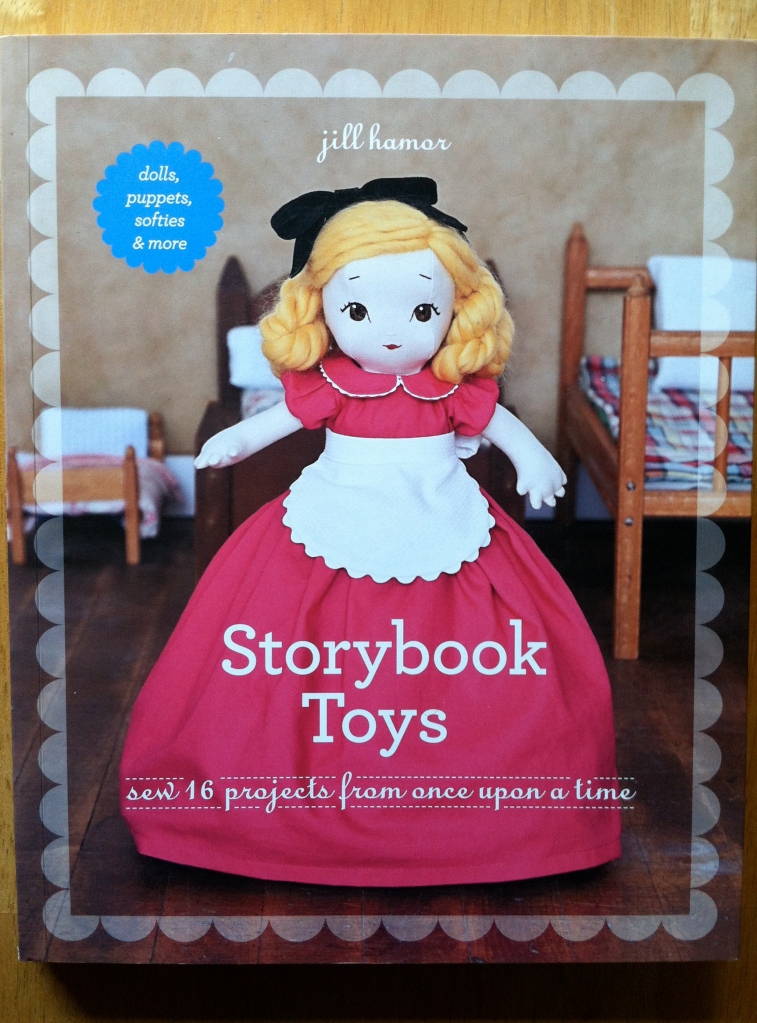











Thank you really helpful and has inspired me to give it a go.
Amei são muito lindas parabéns